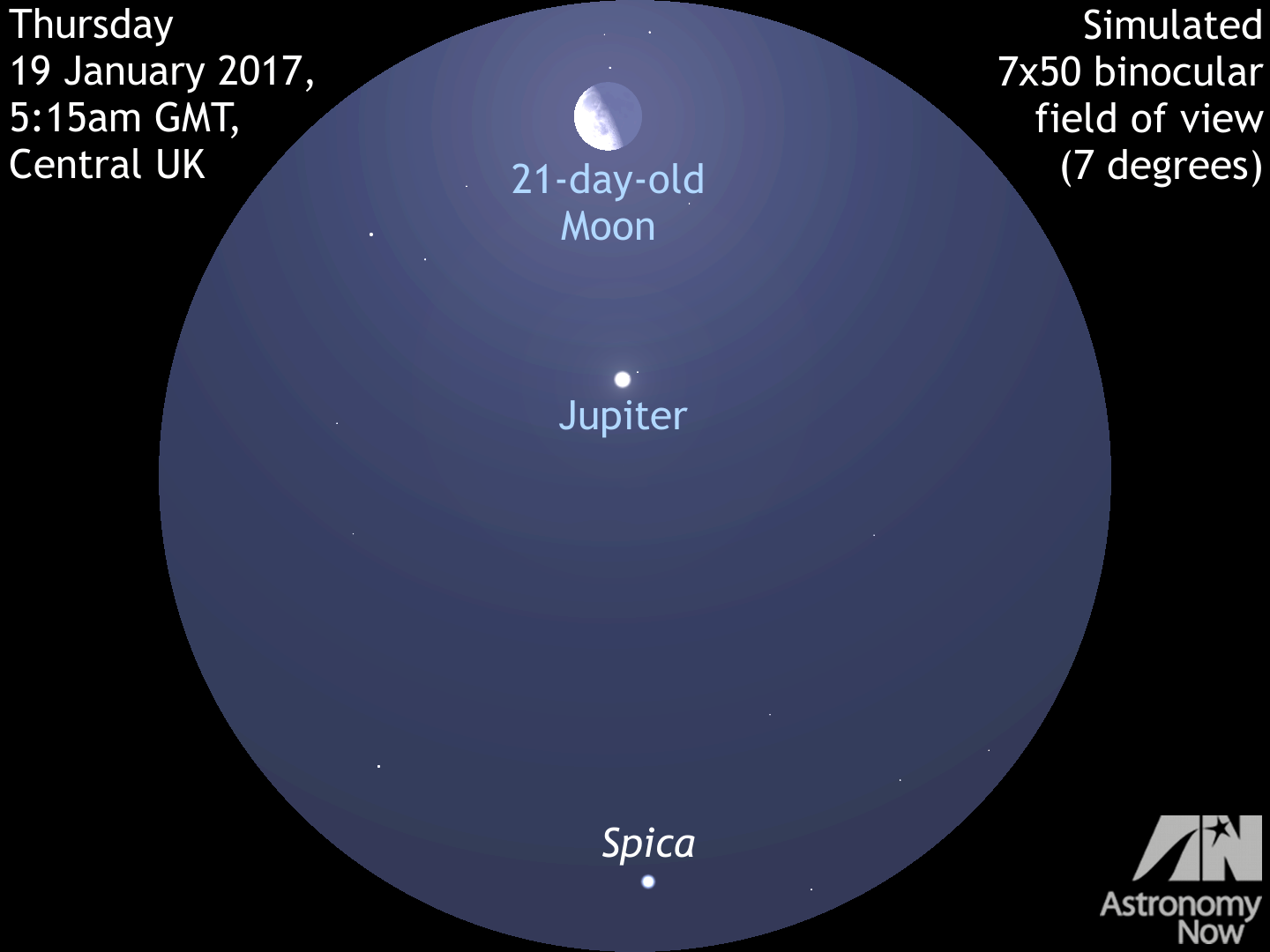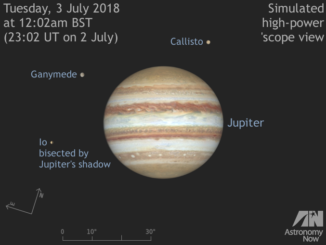
The alignment of the trio is almost perfect as seen from the heart of the British Isles somewhat earlier, around 5:15am GMT. It is, of course, merely a line of sight effect. The Moon, which is at last quarter phase soon after 10pm GMT, is 396,655 kilometres away, whereas Jupiter is currently 786 million kilometres distant — almost 2000 times farther away!
Of course, mere kilometres are woefully small units when one attempts to contemplate how much further first-magnitude star Spica is beyond Jupiter. The star lies around 250 light-years from Earth, or 2,365,000,000,000,000 kilometres distant. Spica is therefore roughly 3 million times farther away than Jupiter.
While looking at Jupiter, note that its largest moon, Ganymede, completes its transit across the planet’s northern polar regions at 6:12am GMT on 19 January. Watch as Ganymede separates from the limb of Jupiter like a tiny bead detaching itself. You’ll need an 8cm aperture telescope and larger, a magnification of 100x or more, and (hopefully) good seeing to see this clearly.
Jupiter’s Great Red Spot (GRS) transits about 2:40am GMT on 19 January too. You can obtain predictions of Jovian satellite events and GRS appearances for other dates, times and locations using our interactive online Almanac.
Inside the magazine
For a comprehensive guide to observing all that is happening in this month’s sky, tailored to Western Europe, North America and Australasia, obtain a copy of the January 2017 edition of Astronomy Now.
Never miss an issue by subscribing to the UK’s biggest astronomy magazine. Also available for iPad/iPhone and Android devices.




